The Maryland National Guard’s 32nd Civil Support Team (Weapons of Mass Destruction), along with the 5th CST from Illinois, conducted the joint exercise Operation Bold Raven Jan. 9-17 in Kapolei, Hawaii. Operation Bold Raven allowed the two teams to train and collaborate as well as conduct an airlift deployment and a joint entry.The teams advised, assisted, and identified hazards in support of civil authorities. A substantial part of the 32nd’s mission was the airlift from Dover Air Force Base in Delaware to Hickam Air Force Base in Hawaii and then the safe return to home station.
“We worked thru the challenges of having never done it [airlift] before, going through the entire paperwork process, loading the vehicles on the aircraft, getting off the ground and getting here [Hawaii],” said 1st Sgt. Marcus Mingo, first sergeant of the 32nd CST. “Moving forward, we will be in a better place. We know exactly what to expect when doing this type of mission; now we should be able to deploy where ever we are needed.”
To prepare for this flight a few members of the 32nd had to build a 29 inch high, 303 inch long and 36 inch wide wooden ramp to load the vehicles onto the aircraft at Dover. The ramp construction took more than 11-hours with $3,000 worth of materials from the nearby hardware store.
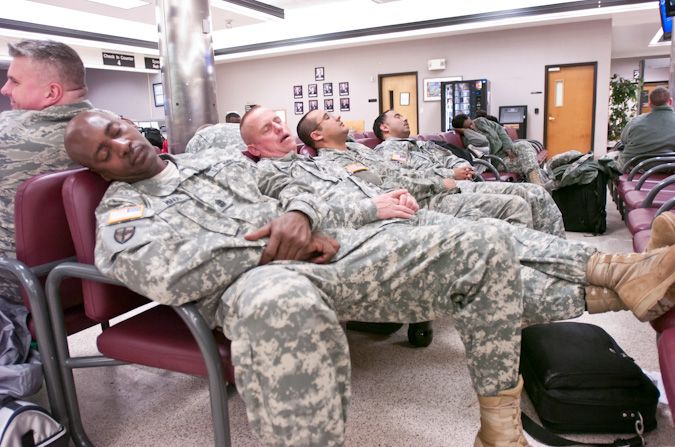 Early morning on Jan. 9 the 32nd received news that take-off will be delayed several hours because of mechanical issues. That several hours morphed into a two-day delay until a replacement plane was sent from the New York Air National Guard. In addition to bedding down in a nearby hotel, the 32nd waited at the passenger terminal to board their flight.
Early morning on Jan. 9 the 32nd received news that take-off will be delayed several hours because of mechanical issues. That several hours morphed into a two-day delay until a replacement plane was sent from the New York Air National Guard. In addition to bedding down in a nearby hotel, the 32nd waited at the passenger terminal to board their flight.
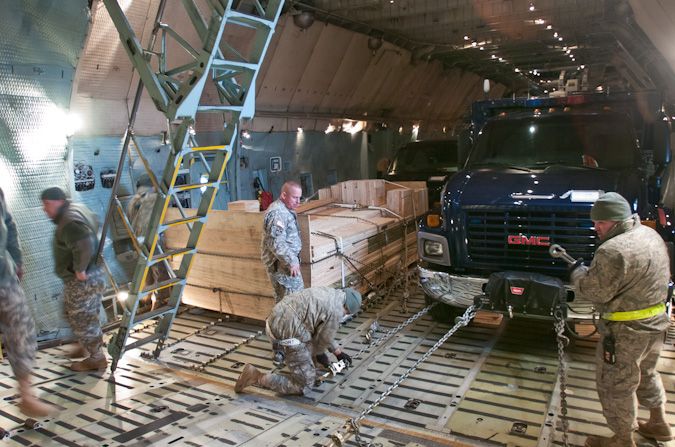 The crew reloaded and secured the 32nd’s vehicles onto a C5-Galaxy, the largest aircraft in the U.S. Air Force. The C5 was built to carry oversize bulk cargo worldwide, it can carry 270,000 pounds of cargo over 6,300 nautical miles without refueling.
The crew reloaded and secured the 32nd’s vehicles onto a C5-Galaxy, the largest aircraft in the U.S. Air Force. The C5 was built to carry oversize bulk cargo worldwide, it can carry 270,000 pounds of cargo over 6,300 nautical miles without refueling.
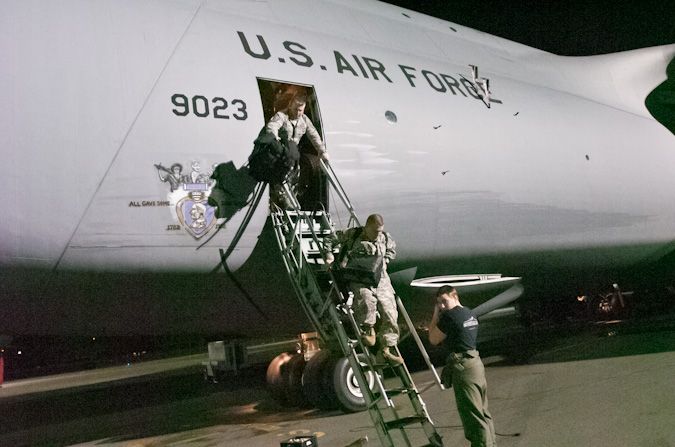 This mission is the first time the 32nd airlifted their vehicles to a location. Although delayed in lift-off, the 11-hour flight was reasonably comfortable and uneventful.
This mission is the first time the 32nd airlifted their vehicles to a location. Although delayed in lift-off, the 11-hour flight was reasonably comfortable and uneventful.
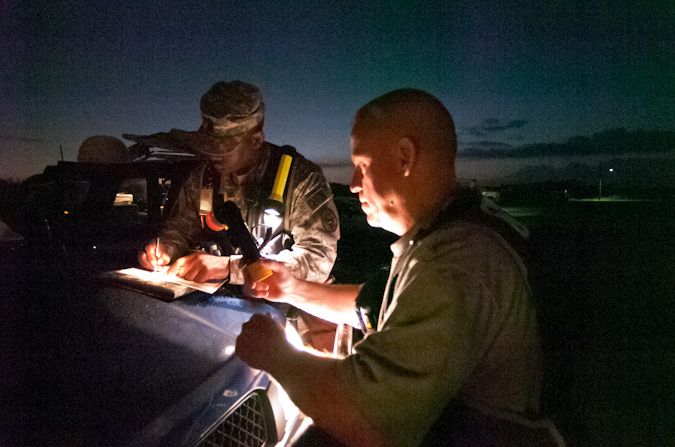
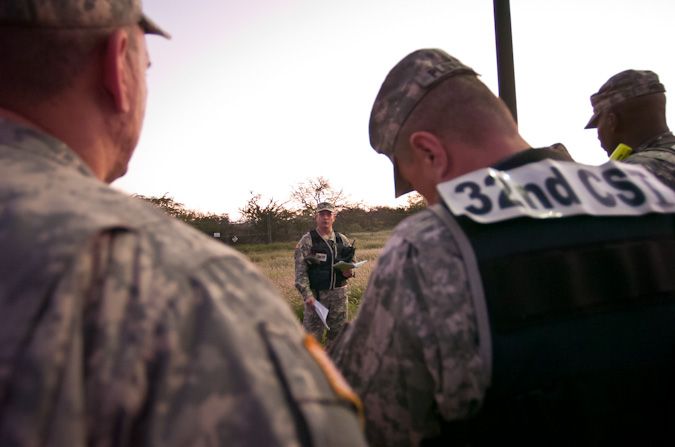 The exercise scenario was to identify toxic industrial chemicals after an alarm sounded at a chemical plant. A former janitor was exposed. She felt a burning sensation on her face and arms. She also displayed signs of respiratory symptoms. Police consider her a person of interest because she was fired two-days before the incident and was not supposed to be there.
The exercise scenario was to identify toxic industrial chemicals after an alarm sounded at a chemical plant. A former janitor was exposed. She felt a burning sensation on her face and arms. She also displayed signs of respiratory symptoms. Police consider her a person of interest because she was fired two-days before the incident and was not supposed to be there.
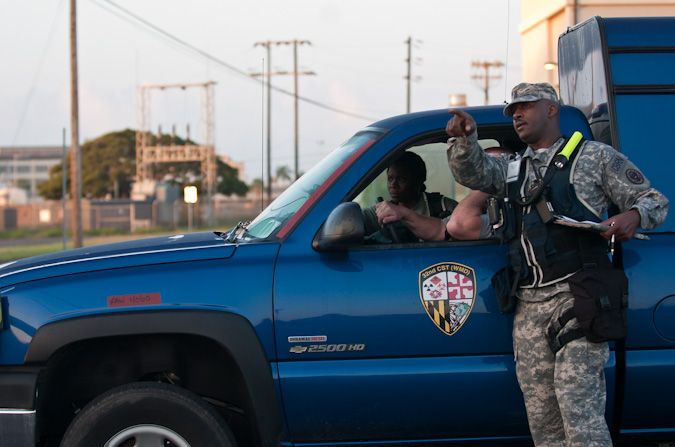 “In terms of this mission my responsibility was making sure we had a footprint established once we arrived on the scene being mindful of vehicles, the hot zone and standoff distances,” said Mingo.
“In terms of this mission my responsibility was making sure we had a footprint established once we arrived on the scene being mindful of vehicles, the hot zone and standoff distances,” said Mingo.
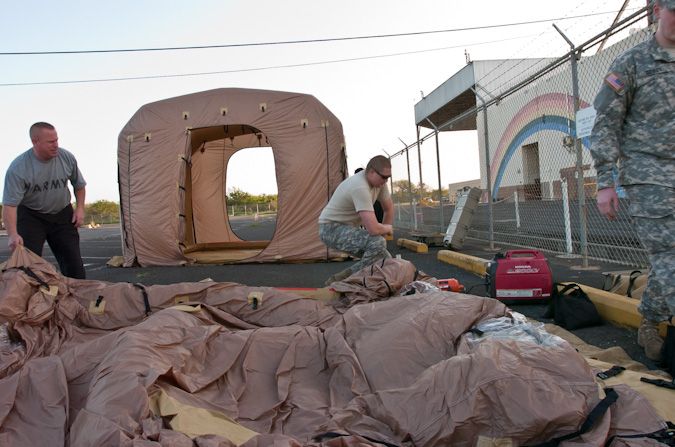 Members of both CST’s setup the Lightweight Inflatable Decontamination System. This system inflates within minutes and serves to decontaminate personnel returning from the hot zone.
Members of both CST’s setup the Lightweight Inflatable Decontamination System. This system inflates within minutes and serves to decontaminate personnel returning from the hot zone.
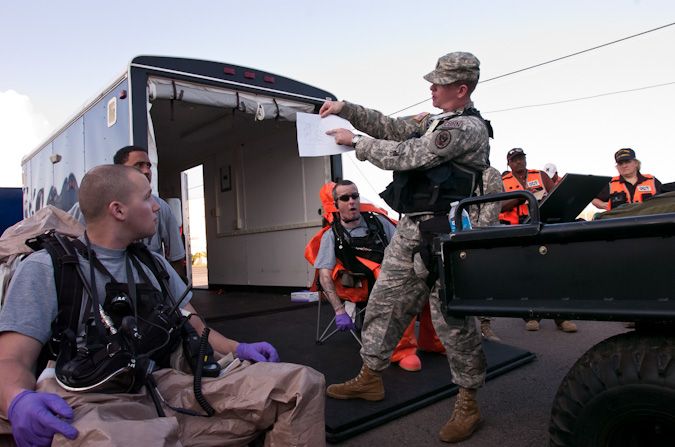 1st Lt. Michael Kehs, briefs the entry team. “Sorry for the map, this is the best I could get for you. Once you establish an area of refuge your going to locate a silver or gray Kia Rondo,” said Kehs.
1st Lt. Michael Kehs, briefs the entry team. “Sorry for the map, this is the best I could get for you. Once you establish an area of refuge your going to locate a silver or gray Kia Rondo,” said Kehs.
 Sgt. Jared King suits up to enter the hot zone. King said he’s done almost 30 entries in a year and a half.
Sgt. Jared King suits up to enter the hot zone. King said he’s done almost 30 entries in a year and a half.
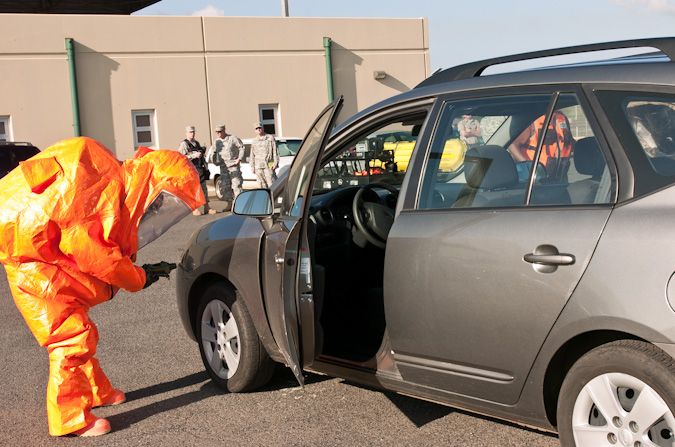 The entry team located the suspect’s vehicle with the driver-side door open. They inspected the vehicle after it was cleared by an explosives ordinance disposal unit.
The entry team located the suspect’s vehicle with the driver-side door open. They inspected the vehicle after it was cleared by an explosives ordinance disposal unit.
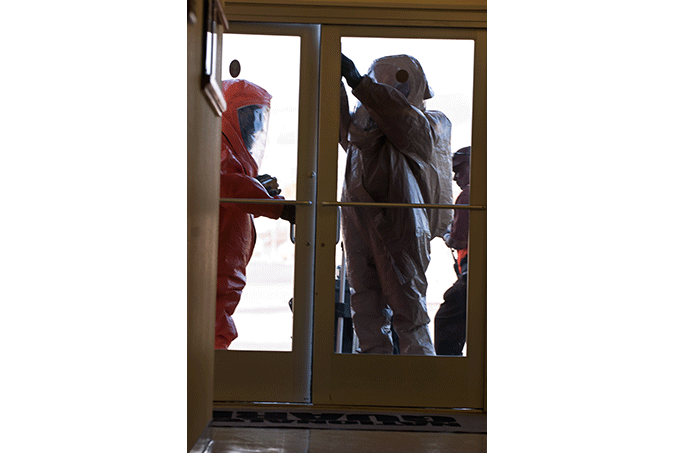 Entry teams entered into the chemical plant in order to determine potential chemical, biological, radiological, nuclear and high-yield explosive hazards. The entry team marked suspicious areas for potential samples and photographed the scene to aid follow up missions.
Entry teams entered into the chemical plant in order to determine potential chemical, biological, radiological, nuclear and high-yield explosive hazards. The entry team marked suspicious areas for potential samples and photographed the scene to aid follow up missions.
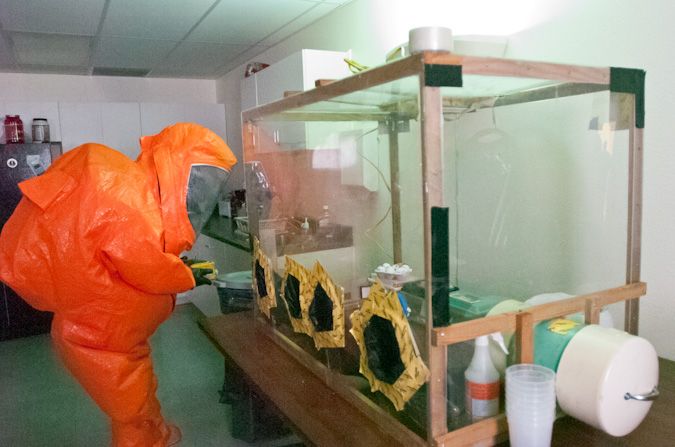
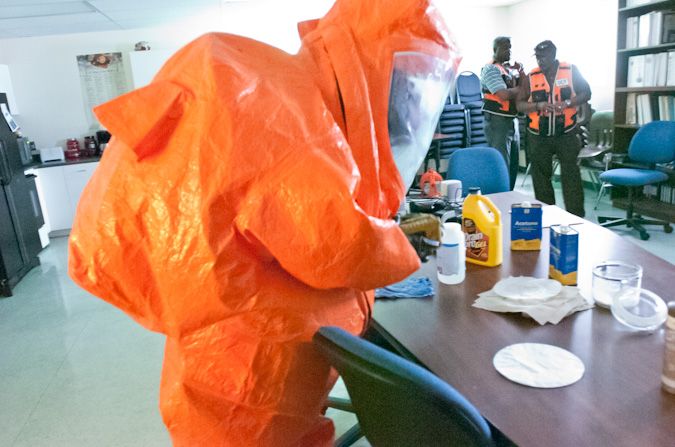 The team discovered labs setup. The labs contained distillation equipment, eggs with biological hazards and dead mice.
The team discovered labs setup. The labs contained distillation equipment, eggs with biological hazards and dead mice.
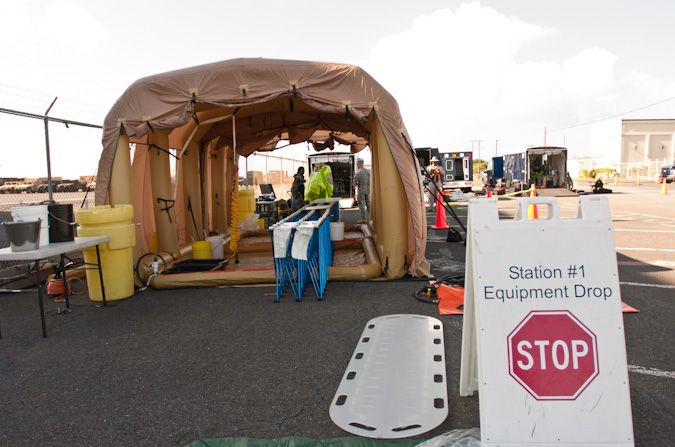 After decontamination the returning personnel were monitored by the medical staff they then brief the survey team leader. They download all the photos taken and discuss any potential sample points. Another team then goes in to collect the samples needed for testing.
After decontamination the returning personnel were monitored by the medical staff they then brief the survey team leader. They download all the photos taken and discuss any potential sample points. Another team then goes in to collect the samples needed for testing.
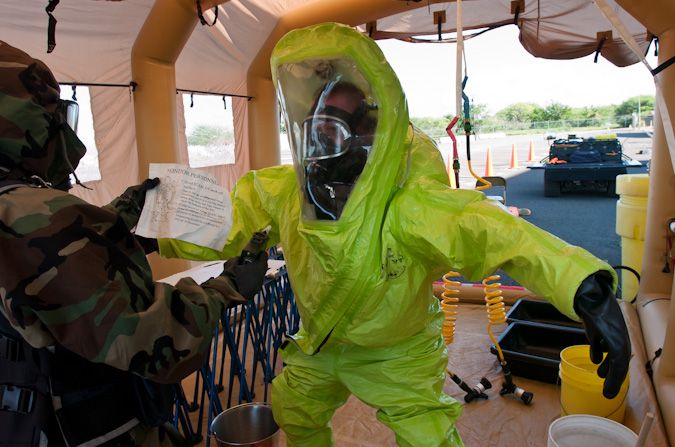 Sgt. Sharon Ramsey, admin commissioned officer of the 32nd CST’s, gets on-the-job training while decontaminating a member of the 5th CST’s sample team.
Sgt. Sharon Ramsey, admin commissioned officer of the 32nd CST’s, gets on-the-job training while decontaminating a member of the 5th CST’s sample team.
“It’s an excellent opportunity to see how other CST’s operate and how to integrate their operations into our own,” said Lt. Col. Kevin Warren, commander of the 32nd CST. “Missions of this type really stress your skills and flexibility in overcoming obstacles and I plan on doing more of these missions for the 32nd CST. ”
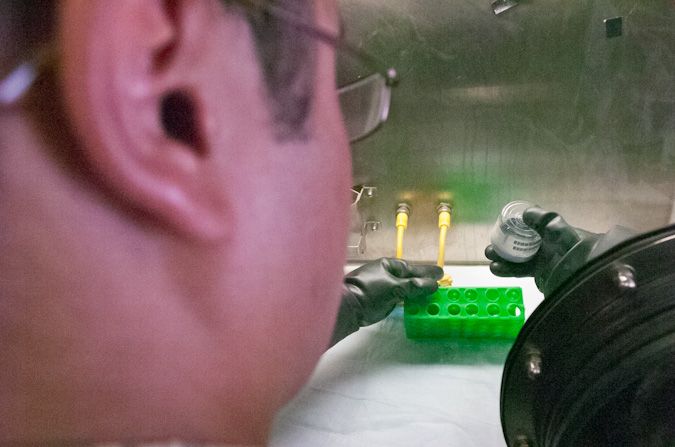 Capt. Joubert Paulino, analytical science officer of the 32nd CST, analyzed the samples retrieved by the sample team. The agent turned out to be a blister agent.
Capt. Joubert Paulino, analytical science officer of the 32nd CST, analyzed the samples retrieved by the sample team. The agent turned out to be a blister agent.
“The can do attitude and professionalism of both teams enabled them to overcome obstacles in communication, not having worked together and standard operation procedures,” said Warren. “What it showed us is that you can never be 100 percent prepared for an operation. There’s always going to be something that comes up that forces you to change tactics or meet the situation with a different resource.”

